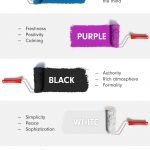The dining scene in New York City has always been more than just about food. The city is known for setting global trends in fashion, art, and culture, and its restaurant spaces are no exception. From Michelin-starred establishments to cozy neighborhood bistros, the design of a restaurant can define its identity, elevate the dining experience, and ultimately determine its success. Today, the work of a skilled restaurant designer is as crucial as the culinary creations served on the plate. Nowhere is this more evident than in the evolution of restaurant interior design in NYC.
The Importance of Restaurant Design in New York
Dining out in New York is an experience that goes beyond taste. Guests expect a memorable atmosphere, one that balances comfort, style, and functionality. A restaurant designer has the responsibility of translating a brand’s concept into a physical space that resonates with guests. In a city with fierce competition, where diners have countless options, the right design can make a restaurant stand out.
Restaurant interior design in NYC often reflects broader cultural shifts. Minimalist dining rooms, vibrant eclectic spaces, and immersive themed environments are all examples of how design keeps pace with changing consumer expectations. The emphasis is no longer just on aesthetics but also on storytelling, sustainability, and innovation.
Blending Function and Aesthetics
One of the defining qualities of leading restaurant designers is their ability to merge function with beauty. A well-designed restaurant is not only visually striking but also practical. The flow of the space must accommodate staff efficiency, guest comfort, and accessibility. In New York’s fast-paced dining scene, where space is often limited, maximizing square footage is essential.
Restaurant designers in NYC are experts at transforming compact areas into inviting environments. Clever lighting, creative use of mirrors, and multi-functional furniture all contribute to making smaller spaces feel expansive. For larger venues, designers often create distinct zones within one restaurant, offering diners varied experiences under the same roof.
Embracing Technology in Design
Technology is playing a bigger role in restaurant interior design in NYC than ever before. Touchless systems, integrated reservation platforms, and smart lighting are now standard considerations for many new projects. Designers are also incorporating digital art installations and interactive elements to create memorable dining experiences that appeal to tech-savvy guests.
Additionally, the rise of delivery and takeout services has influenced how designers approach spatial planning. Many restaurants now include designated pickup areas that are seamlessly integrated into the overall design, ensuring convenience without detracting from the ambiance.
Sustainability and Conscious Choices
New Yorkers are increasingly mindful of sustainability, and restaurant designers are responding to this demand. Reclaimed wood, recycled metals, and energy-efficient systems are becoming common features of new projects. The use of natural materials not only reduces environmental impact but also creates a warm and authentic atmosphere.
Restaurant interior design in NYC also often incorporates greenery, from living walls to carefully curated plant arrangements. These natural elements contribute to improved air quality and bring a sense of calm to bustling urban environments.
Storytelling Through Design
One of the most powerful tools at a restaurant designer’s disposal is storytelling. Diners want to feel connected to a brand, and interior design offers a way to share that narrative. Whether inspired by cultural heritage, artistic influences, or the neighborhood itself, a restaurant’s story is told through textures, colors, and architectural details.
For example, a designer might draw inspiration from the chef’s culinary journey, weaving personal touches into the decor. Lighting, artwork, and custom furnishings can all contribute to creating a cohesive narrative that keeps guests engaged and encourages them to return.
The Role of Collaboration
Restaurant design is rarely a solo endeavor. The most successful projects result from close collaboration between the restaurant designer, the chef, and the business owners. This partnership ensures that the design not only reflects the brand’s vision but also supports operational efficiency.
In NYC, where culinary concepts often push boundaries, collaboration between designers and chefs leads to innovative dining spaces that set global trends. By combining creative vision with practical expertise, these teams create environments that elevate the dining experience and redefine industry standards.
Looking Ahead: The Future of Dining Spaces
The future of restaurant interior design in NYC is one that embraces flexibility, inclusivity, and innovation. Designers are experimenting with adaptable layouts that can transition between casual daytime dining and upscale evening service. Inclusivity is also becoming a priority, with designers ensuring spaces are accessible to all guests.
Wellness-focused design is also on the rise. From improved air circulation systems to layouts that encourage social connection, restaurant designers are prioritizing the health and wellbeing of both guests and staff. The result is a more holistic dining experience that reflects broader lifestyle trends.
Redefining the Dining Experience
The influence of a restaurant designer extends far beyond the dining room’s walls. In New York City, where competition is fierce and expectations are high, restaurant interior design shapes how guests perceive and experience food. By blending aesthetics, functionality, technology, and sustainability, designers are not only responding to the present but also shaping the future of dining.
Restaurant interior design in NYC is evolving in ways that reflect the city’s dynamic spirit. As top designers continue to innovate, diners can expect spaces that surprise, inspire, and redefine what it means to eat out in one of the world’s greatest culinary capitals.


